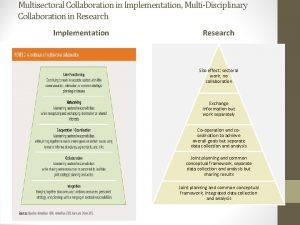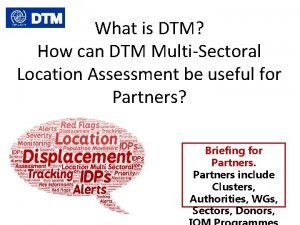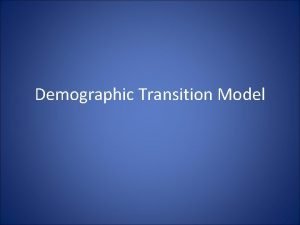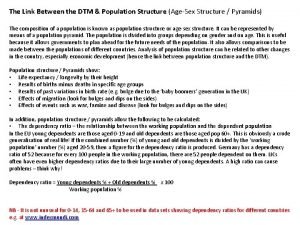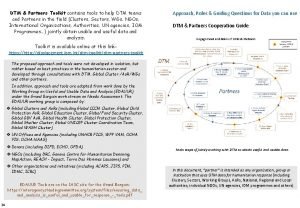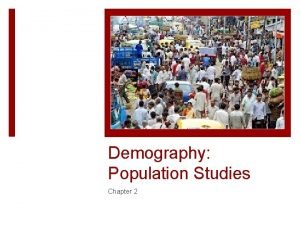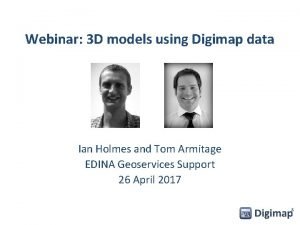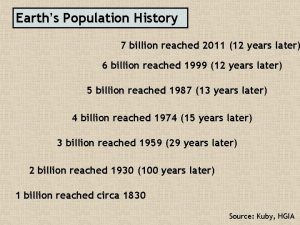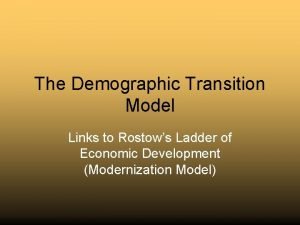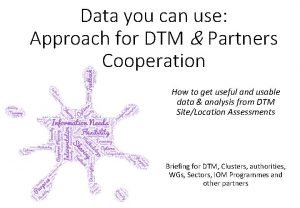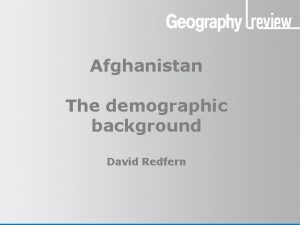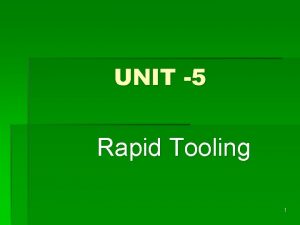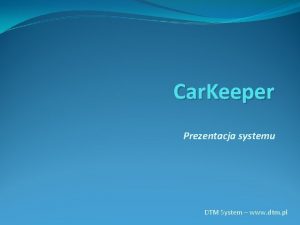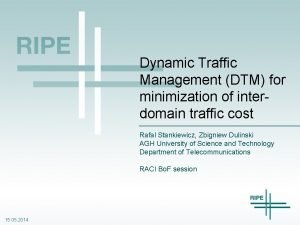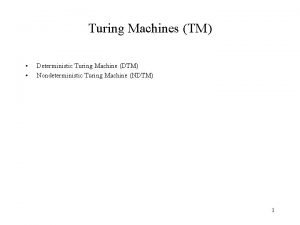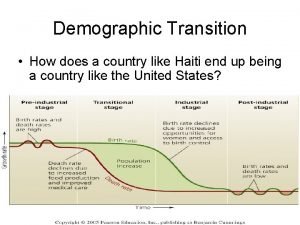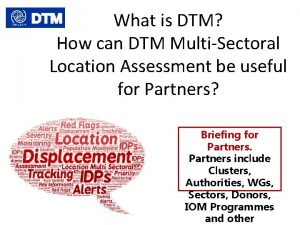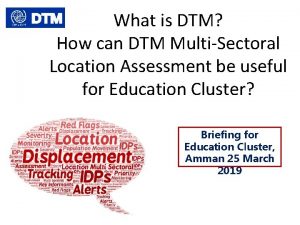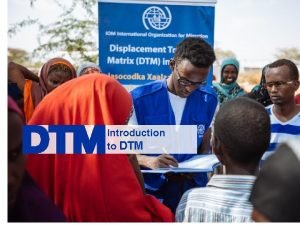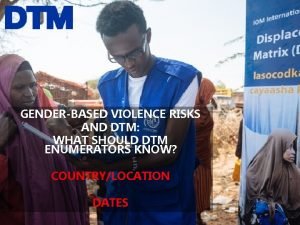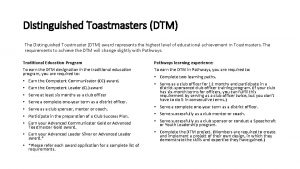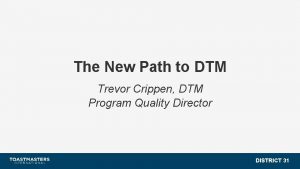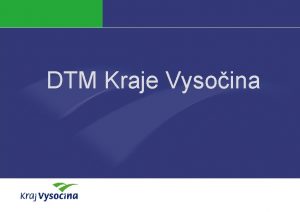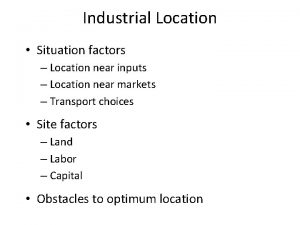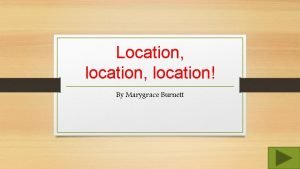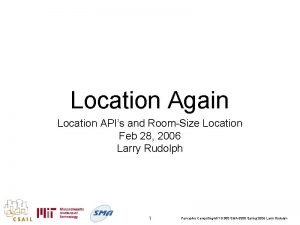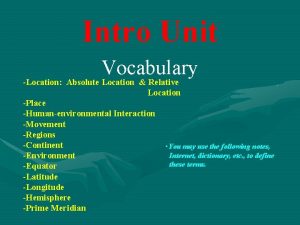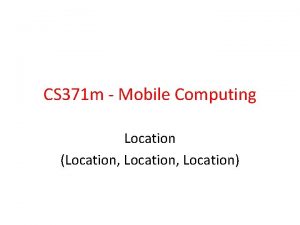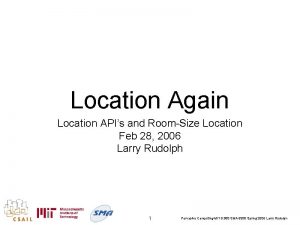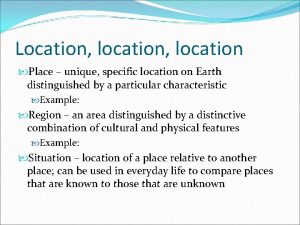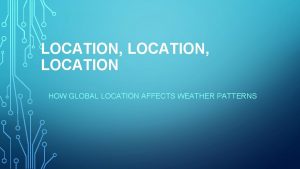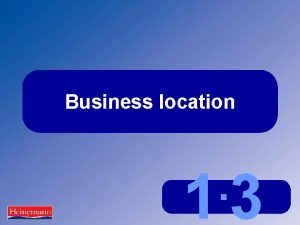What is DTM How can DTM MultiSectoral Location























- Slides: 23

What is DTM? How can DTM Multi-Sectoral Location Assessment be useful for Partners? Briefing for Mine Action Partners Technical Workshop on Data Sharing for the Mine Action Ao. R Amman, March 2019

This session explains: 1. The 4 DTM components 2. Strengths and Limitations of DTM Multi Sectoral Location Assessment 3. How Partners can use DTM Data & Products 4. Where to find DTM Data and further information on DTM online

DTM OPERATIONS OVERVIEW Since its inception in Iraq in 2004, DTM has expanded its coverage to reach 80 countries. Past and present implementation contexts include conflicts, natural disasters and complex emergency settings, from smallscale & short-term to large-scale and protracted displacement & migration crises.

MOBILITY TRACKING DTM Components Tracks mobility and crosssectoral needs in locations of interest (systematically) Sub-components: • Baseline Area/ Sub Area • Multi Sectoral Location Assessment • Emergency Event Tracking (Sudden large movement of population) Tracks movement of flows at specific points Groups and Location REGISTRATION Registers individuals or households for beneficiary selection, vulnerability targeting and programming Sub-components: • Rapid Emergency Registrations • Biometric Registration FLOW MONITORING Sub-components: • High mobility location assessment • Flow Monitoring Registry SURVEYs Households and Individuals Gather specific information using sample from population of interest Examples: • Return Intention • Community Perception • Displacement Solutions • Flow Monitoring Surveys

Not all DTM components are always rolled out in every country: DTM is implemented according to need, so different components may be rolled out in different countries.

Most relevant for Mine action colleagues: Emergency Event Tracking and Multi Sectoral Location Assessment MOBILITY TRACKING Sub-components: • Baseline Area Assessment • Baseline Sub Area Assessment • Multi Sectoral Location Assessment (Stock) • Emergency Event Tracking (Sudden large movement of population) Groups and Location When • Initial displacement • Protracted displacement • Regular monitoring How? • Key informants Interviews (Not sectoral experts) • Enumerators observation (Not sectoral experts) Where? • Locations: IDP Camps/Sites/Villages/Neighb ourhood

What is and How is DTM Emergency Event Tracking (EET) implemented? • EET is done when there is a sudden large movement of population • Information is quickly shared with partners (e. g. , 72 hours) • It collect inter-sectoral data (e. g. , number of displaced people, place of origin and place of displacement, reasons for displacement) • It may also collect information on main sector of need (e. g. , “main three needs are shelter, water and health”) • Is carried out through Key Informants, including through remote reporting of experienced key informants • Information is not always triangulated and should be considered an estimation for alert purposes • It is the first alert that often comes in about new displacement

How can EET be used by Mine Action Colleagues? • Reasons for displacement may include information that can trigger an assessment to identify the need for mine action response in Place of Origin • Pre-existing information of risks in place of displacement may trigger response, as population may not be aware of such risks (e. g. , Mine Risk education…) • Others?

How is DTM Multi-Sectoral Location Assessment implemented? DTM Location Assessment: • It is implemented at regular intervals & can monitor changes over time • It collect inter-sectoral data (population, locations…), in addition to some sectors-specific data • Is carried out mostly through Key Informants Interviews and Observation • Does not interview samples of individual or HH • Is carried out at community level (not at facility level) • Does not interview sectoral specialists • Enumerators are not sectoral specialists • Information is triangulated with more key informants per location

Strengths and Limitations of DTM Location Assessment Limitations • Cannot ask questions that require a specific sectoral knowledge • Cannot provide statistically representative information • Cannot replace sectoral, in-depth assessments /monitoring tools • Is not programme monitoring Strengths • Has often a very large territorial reach within the country • Is implemented in a large number of crisis (very likely you will find a DTM exercise in your country of operation) • It is flexible, and can be adjusted according to the needs of humanitarian actors: it provides useful data for response • Data are shared quickly. Most data are shared publically, some through Data Agreements. Data for urgent action can be shared immediately. • Global experts, including Global Clusters and DTM have agreed on a list of recommended questions for Location Assessments • It is repeated over-time, regular monitoring

How do Partners use DTM Multi. Sectoral Location Assessment Data? • Use DTM estimates of population and groups at location and national level for planning and advocacy • Use DTM geo coordinates of locations hosting IDPs for operational decision-making • Use results to monitor change over time by location, region and at national level for planning and operational response • Use DTM data to monitor access to services in locations on a periodic basis • Use DTM data to monitor risks in locations on an ongoing basis • Use DTM data to spot sectoral red flags/alerts, and follow up • Use DTM data to prioritize locations for their in-depth assessments

DTM Data-Sharing • DTM shares data mostly through public dissemination (e. g. , DTM global website: https: //displacement. iom. int/or country websites) and through mailing lists. • It is important that partner colleagues know where to find DTM data on the Internet, how to add their address to the mailing list and inform their replacement when leaving. • DTM does not share sensitive data publically. When DTM & Partners identify specific datasets as sensitive in the Data Analysis Plan, they also agree on data-sharing modalities and sign Data Sharing Agreements/Mo. Us. • DTM & Partners agree on modalities for URGENT ACTION data-sharing. This will ensure that DTM: 1) Recognize data needed by partners for immediate action 2) Know how and with whom to share such data in real time For questions and support, contact the DTM coordinator in your country (ask DTMSupport@iom. int for his/her contact details).

Do you want to know more on DTM? More information is available in the DTM&Partners Toolkit, including Narrated Briefings, Methodological Framework for DTM and DTM Frequently Asked Questions 2 -pager answers the main questions about DTM.

DTM& Partners Working Together We developed an approach and tools based on best practices in the humanitarian sector and in consultations with DTM, Global Cluster /Ao. R/WGs and other partners. The approach and some of the tools are adapted from work done by the. Working Group on Useful and Usable Data and Analysis (EDAUUR) under the Grand Bargain work stream on Needs Assessment. The EDAUUR working group is composed by: Global Clusters and Ao. Rs (including Global CCCM Cluster, Global Child Protection Ao. R, Global Education Cluster, Global Food Security Cluster, Global GBV Ao. R, EGlobal Health Cluster, Global Protection Cluster, Global Shelter Cluster, Global UNICEF Cluster Coordination Team, Global WASH Cluster UN Offices and Agencies (including UNHCR FICS, WFP VAM, OCHA FIS, OCHA NAAS, IOM DTM) Donors (including DIFD, ECHO, OFDA) NGOs (including Map. Action, REACH - Impact, DRC, Geneva Centre for Humanitarian Demining, Terre Des Hommes Lausanne) and Other organizations and initiatives (including ACAPS, JIPS, PIM, ICRC) This work is the result of years of combined experience and months of targeted effort: DTM team is grateful to all those who contributed.

DTM results in Partners’ analysis & decision-making • DTM is one of the tools partners use for their evidencebased decision making. • Partner uses all the data and information at their disposal, including DTM, for analysis and response planning • DTM added benefit for Partners is that Partners can engage in the planning phase of a DTM Assessment, and use DTM to fill their specific information gaps, and can monitor changes over time. Partners use DTM results and interpret them together with other information

Partner reflection time: Is DTM Location Assessment the appropriate Methodology for some of the information I need? • Partners will have to evaluate if DTM Location Assessment is the appropriate way to fill their information gaps, considering method of data collection, level of analysis & measurement, feasibility, resources, time and access of DTM and alternative approaches. • DTM Locations Assessments mostly use Interviews with Non-Sectoral-Expert Key informants at community level. Data collection is carried out at regular time intervals enabling the monitoring of changes over time. • If a different method is necessary, partners can discuss alternative DTM tools /components (e. g. , ad hoc surveys, registration…), and/or look for a different system (e. g. , Cluster own assessment). If Partner has a better source, please use it. Otherwise, let DTM know. They will gladly help.

Approach: Start from Use not from Questions Walking backwards Decision to be made (USE) Information gaps Methodology Data Collection Tool and Analysis Plan

Approach: Roles in identifying information needs Partners’ Decision-Makers (e. g. , Sector/Cluster Coordinator/Members) clearly identify the decisions they have to take, and the information they need but do not have Partners‘ Subject-Matter Experts (e. g. , Sector/Cluster Coordinator/Members) and IM Experts identify what information is available and accessible, and where gaps are. Partners‘ IM Experts identify the right methodology for such information needs Partners’ Cultural Experts (e. g. , local NGOs, Local staff, specialists of the context/culture) help turn abstract information needs into specific local ‘meaning’. They also help translate information needs into language that will be correctly understood in that specific context/culture.

Implementation: DTM & Partners Cooperation for Enumerators Training Time investment by the partner will result in increased reliability, trust and ownership of results. • Specific partners can provide specialized training for DTM enumerators • This will ensure that definition are commonly agreed and questioning modalities are appropriate. • Examples are the Child Protection training provided to DTM by Child Protection Ao. R colleagues.

DTM&Partners Toolkit is online: Tools were jointly developed to help DTM & Partners in the field implement using this approach DTM & Partners Toolkit: https: //displacement. iom. int/dtm-toolkit/dtm-partners-toolkit

Collaboration between DTM and Mine Action Partners

Now you know DTM tools a bit better: how would you use DTM data for your work?

Thank you!
 Multisectoral and multidisciplinary
Multisectoral and multidisciplinary Dtm location
Dtm location A cross country skier moves from location a to location b
A cross country skier moves from location a to location b Chapter 8 location planning and analysis
Chapter 8 location planning and analysis Demographic transition model
Demographic transition model Dtm population pyramids
Dtm population pyramids Dtm partners
Dtm partners Dtm pyramids
Dtm pyramids Os terrain 5 dtm
Os terrain 5 dtm Dtm
Dtm Stages of dtm
Stages of dtm Dtmpartners
Dtmpartners Afghanistan demographic transition model
Afghanistan demographic transition model Kirksite tooling
Kirksite tooling Population pyramid stages
Population pyramid stages Uk demographic transition model
Uk demographic transition model Dtm cooling system
Dtm cooling system Dtm traffic management
Dtm traffic management Tm in automata
Tm in automata Metody pomiaru rzeźby terenu
Metody pomiaru rzeźby terenu Dtm dynamic tag management
Dtm dynamic tag management Haiti dtm stage
Haiti dtm stage Already can or can already
Already can or can already If you can't measure it you can't control it
If you can't measure it you can't control it
